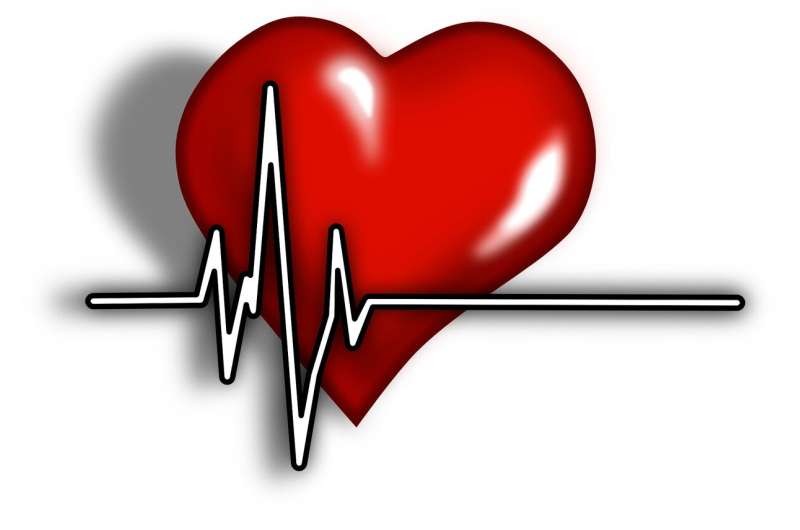
The European Society of Cardiology (ESC) Guidelines on cardiac pacing and cardiac resynchronization therapy (CRT) are published online today in European Heart Journal.
The use of pacemakers continues to grow as populations worldwide are living longer. It is estimated that around one million devices are implanted globally every year. Pacemakers are electrical devices that are connected to the heart by wires (electrodes) and have been used since the late 1950s to treat slow heart rhythms, thus preventing fainting and even death. They replace the function of the heart’s natural electrical system that eventually stops working. CRT is a mode of pacing that uses an extra electrode on the heart’s left side to improve contraction—it is used when the heart is failing to contract properly and electrical conduction is too slow.
Several components of the heart’s natural electrical system may fail with aging, thus necessitating pacing, and these are the most common reasons to implant a pacemaker. Other indications include situations that may affect the conduction system such as heart attacks, inflammatory diseases, metabolic diseases, congenital and genetic diseases, and heart operations and interventions.
The document outlines changes in indications and pacing methods that have occurred since 2013 when previous ESC pacing guidelines were published. They include, among others, new approaches to pacing in various situations of fainting that are related to abnormal reflexes originating from the brain (neural mediated fainting). Several indications for CRT in heart failure have been modified in agreement with the ESC heart failure guidelines task force. In addition, there are new sections on pacing after transcatheter aortic valve implantation (TAVI) and following heart operations. A new section covers sex differences, reflecting the fact that pacing indications and complication rates differ between male and female patients.
“In the early days, pacing was at a fixed rate but today it is more sophisticated and closely simulates the normal electrical activity of the heart, known as ‘physiological pacing’,” said guidelines task force chairperson Professor Michael Glikson of the Hebrew University of Jerusalem, Israel. “The guidelines introduce novel approaches to pacing the conduction system to achieve more physiological pacing—called His bundle and left bundle pacing.”
Regarding decision-making on whether or not a device is required, for the first time the pacing guidelines devote an entire chapter to this topic including novel diagnostic tools and what tests to perform in specific situations. For example, cases where it is necessary to look for an underlying heart disease with special blood tests, when to perform genetic tests and cardiac imaging, and when to perform prolonged monitoring using wearable or implantable devices to discover intermittent rhythm problems requiring pacing.
Numerous concrete recommendations are given on how to reduce complications. For example, preoperative administration of antibiotics within one hour of skin incision is recommended to lower the risk of device-related infection, while chlorhexidine alcohol should be considered to disinfect the skin at the incision site. The device is placed in a pocket created under the skin and the guidelines state that rinsing this pocket with saline should be considered before wound closure to dilute possible contaminants and eliminate debris. In certain situations, use of an antibiotic-eluting envelope may be considered for patients undergoing a re-operation on their device. Permanent pacemaker implantation should not be done in patients with fever, but should be delayed until fever has been absent for at least 24 hours to reduce the risk of later device infection.
Recommendations are provided on how to manage patients with pacemakers in special situations, such as when magnetic resonance imaging (MRI) or irradiation are needed. Compared with the 2013 guidelines, more pacemaker patients can now undergo MRI, and a flowchart is provided to aid decision-making according to the particular pacing system. Similarly, most pacemaker patients requiring irradiation can undergo therapy with appropriate precautions and evaluation afterwards.
Regarding follow-up, remote monitoring of devices accelerates the identification of technical issues including battery depletion and clinical problems such as arrhythmias. The guidelines recommend remote device management for patients with difficulties attending in-office appointments and when a device component is at higher risk of a technical problem to enable early detection.
Guidelines task force chairperson Professor Jens Cosedis Nielsen of Aarhus University, Denmark said: “The guidelines emphasize the importance of patient-centered care and shared decision-making between patients and clinicians both preoperatively and during follow-up. Topics of education are outlined to help patients make informed choices. Decisions on the type of pacemaker therapy should be based on the best available scientific evidence, risk-benefit judgements of the treatment options, and the patient’s preferences and goals of care.”
European Society of Cardiology

